The Astor Theatre, opened in 1906 at Broadway and W. 45th Street. Located next to the Hotel Astor and surrounded by notable theaters like the Victoria Theatre, Morosco Theatre, Bijou Theatre, and the original Helen Hayes Theatre, it was part of a vibrant theatrical district.
Initially home to live performances, the Astor shifted to movies in 1925, becoming known for MGM's Technicolor premieres in the 1940s.
In 1972, the theater closed its doors. Despite efforts to save it, The Astor was demolished in 1982 to make way for the Marriott Marquis Hotel.
Although the Astor is long gone, we can still marvel at the breathtaking photos that capture the dazzling displays of classic Hollywood grandeur on its marquee. These images remind us of an era when theaters were not just venues but spectacular dream palaces.
The Broadway Melody (1929) at The Astor twice daily 2:45 and 8pm. “All Talking, All Dancing, All Singing”
Next door at The Victoria is Hearts of Dixie. Although it has fallen into obscurity, it was a landmark release. Produced by Fox Films, it was one of the first major studio films to feature a predominantly Black cast, starring Stepin’ Fetchit, Clarence Muse, and child actor Eugene Jackson.
Hollywood Revue (1929) We’ve seen a cropped photo of this marquee in my write-up on the zany living billboard story.
Here’s a wider shot featuring the movie title in stylized lettering lit by incandescent bulbs. Also, one of those girls atop one of those letters is Ann Dvorak!
GARBO. Queen Christina. 1933.
Kings Row (1942) “Where’s the rest of me?”
The cast of Kings Row included Robert Cummings, Ann Sheridan, Ronald Reagan, Claude Rains, and Judith Anderson, but you’d never know it by looking at this marquee. None of the stars’ names are illuminated and towering fifty feet above the street.
I'm intrigued as to why the marquee features that very 1940s couple under the streetlamp. The film is set between the 1890s and early 1900s, and no scene like this appears in the movie. . .perhaps it was a way to convey how “racy” the story was. . .
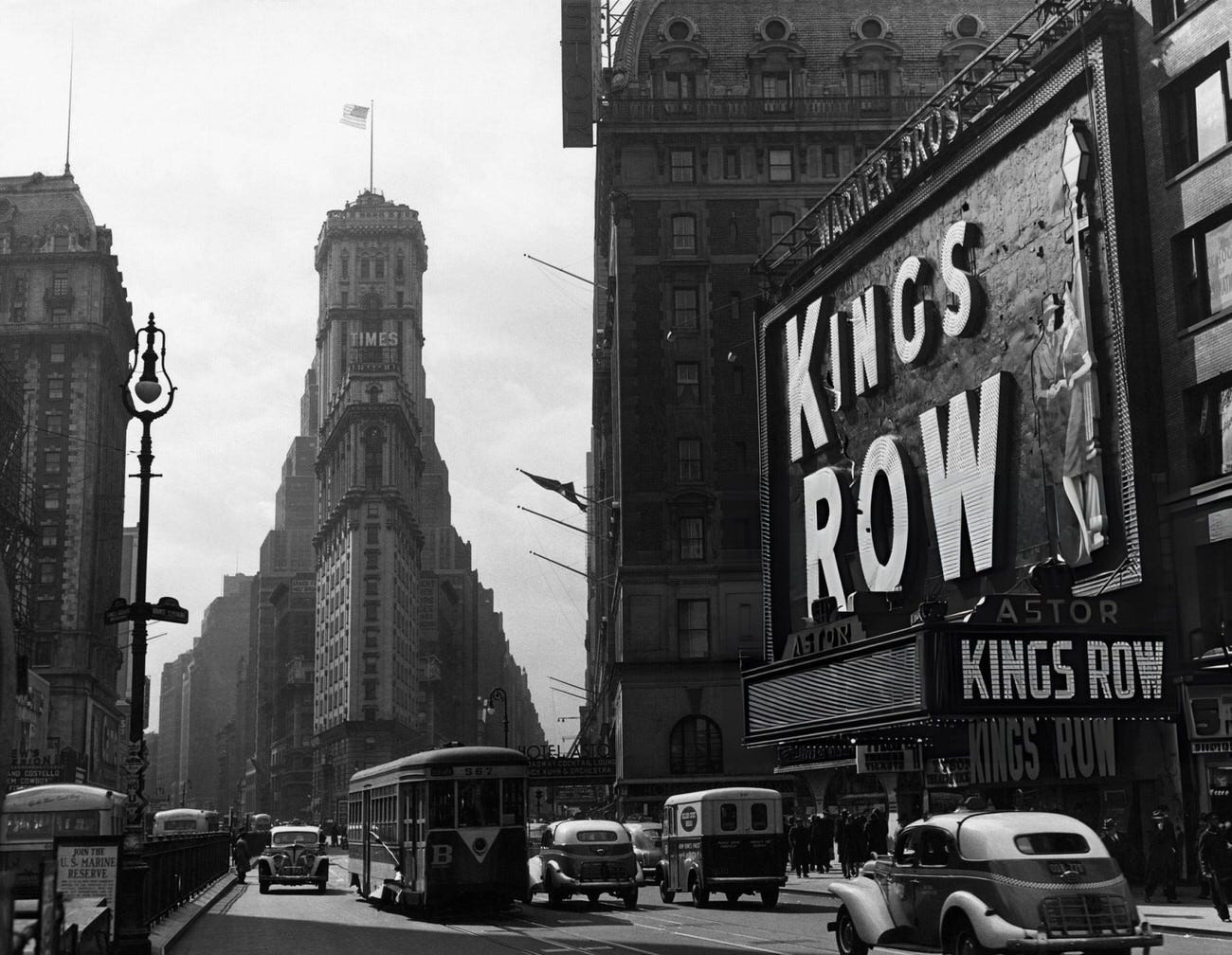
Battleground at The Astor and The 3rd Man at The Victoria (1949)
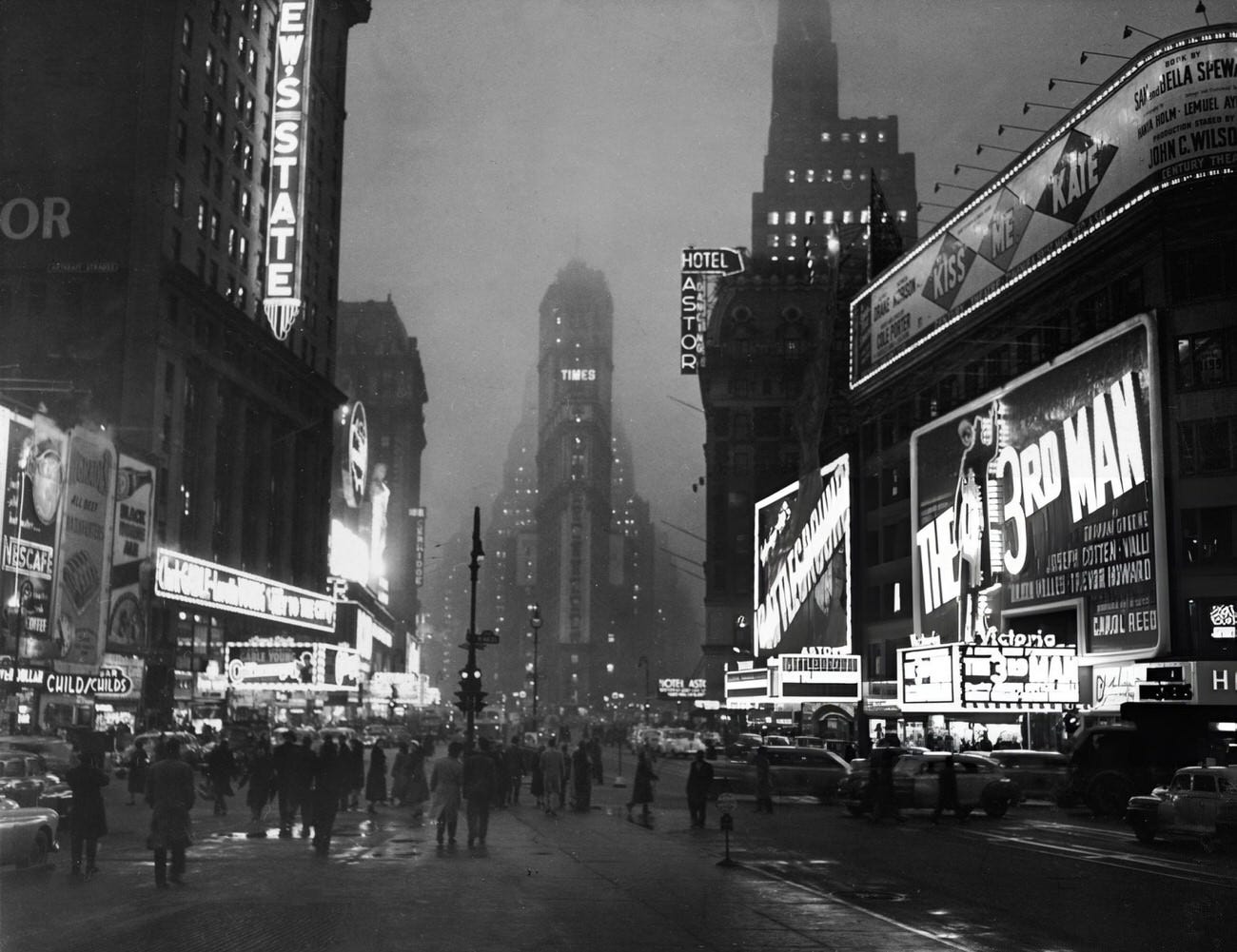
I want to find a better image of the Battleground marquee. I think it features an illuminated GI waving his helmet, similar to one of the movie poster design.
Meet Me In St. Louis (1944)
“Glorious Love Story with MUSIC and TECHNICOLOR”
The massive triple decker Meet Me In St. Louis signage even features the 1904 World's Fair Ferris wheel and fairground buildings. I couldn’t find any photos of this marquee at night, which is too bad because I’m sure it was stunning.
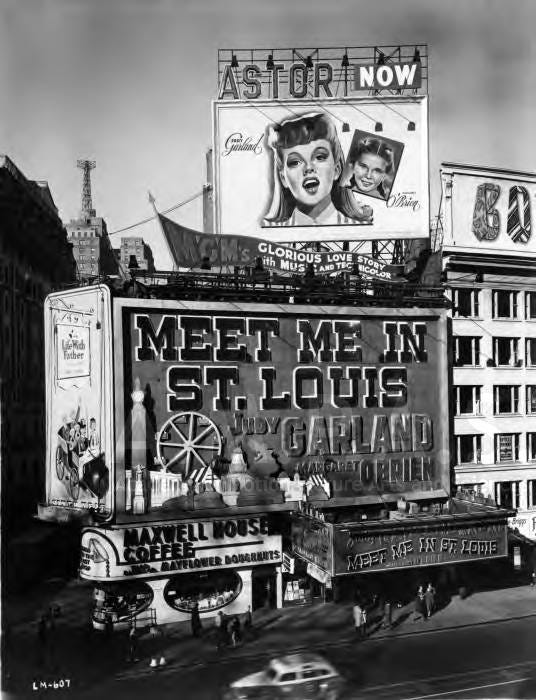
After some digging, I managed to find this color snapshot on eBay.
A tiny portion of The Victoria’s marquee next door is visible and I was curious as to what was showing.
I checked the papers - it was The Sign of The Cross.
Here Come’s The Groom (1951)
While it’s not as creative as the previous marquee displays, I bet when they flipped the switch at night, this was as bright as all get out!
The Queen of Sheba (1953) The Astor decked out for the Italian import. Next door the Victoria is showing The Moon Is Blue.
The Victoria announcing A Star Is Born as Marlon Brando in On The Waterfront glances over his shoulder from The Astor. (1954)
Spellbound (1945)
A beautiful color shot of the Astor marquee decked out for the world premiere of Spellbound.
Bergman also received the triple-decker treatment. She’s got all eye on her, and just in case we were unsure... she’s incomparable!
The Secret Life of Walter Mitty (1947)
Spectacular views of The Astor as well as billboards for Lured, The Outlaw, and Unconquered. A visual feast!
New York. 1949. Just a snapshot of a fleeting moment captured in glorious Kodachrome.
In the background you can see at The Victoria is Home of the Brave, across the street at the Loew’s State is The Barkleys of Broadway.
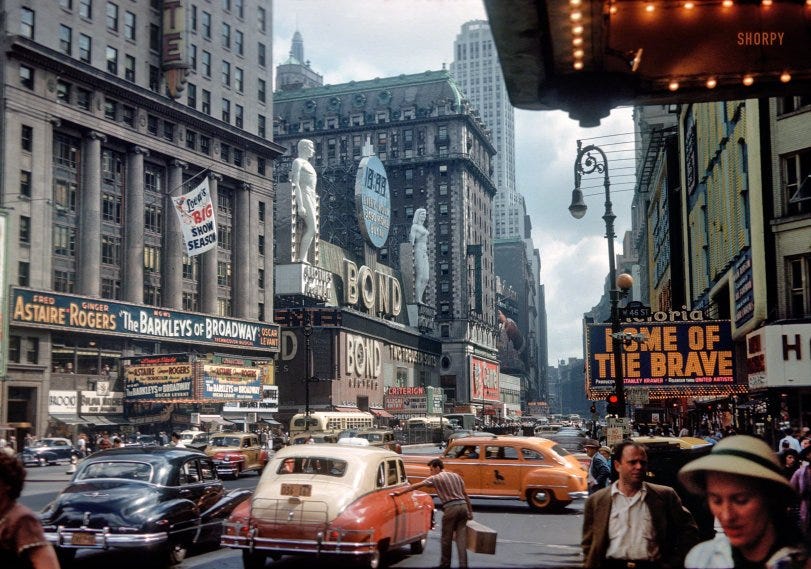
Want more on The Astor, check out Meet Me at The Astor




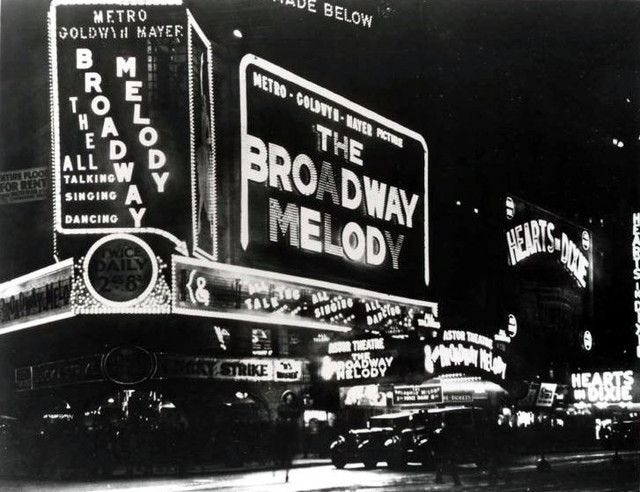
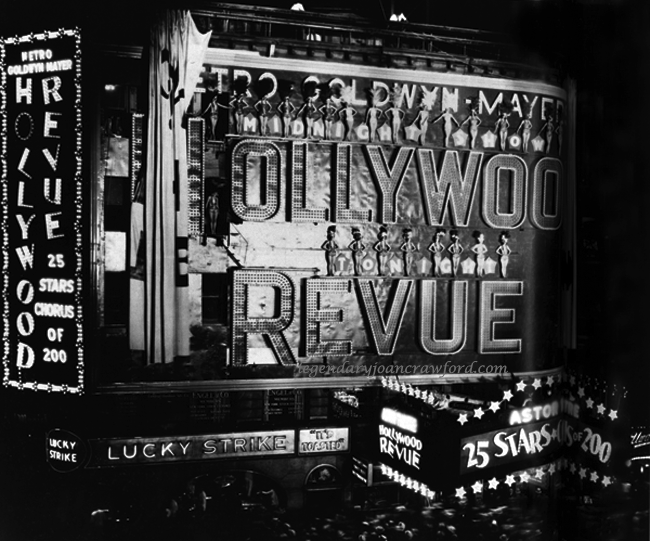
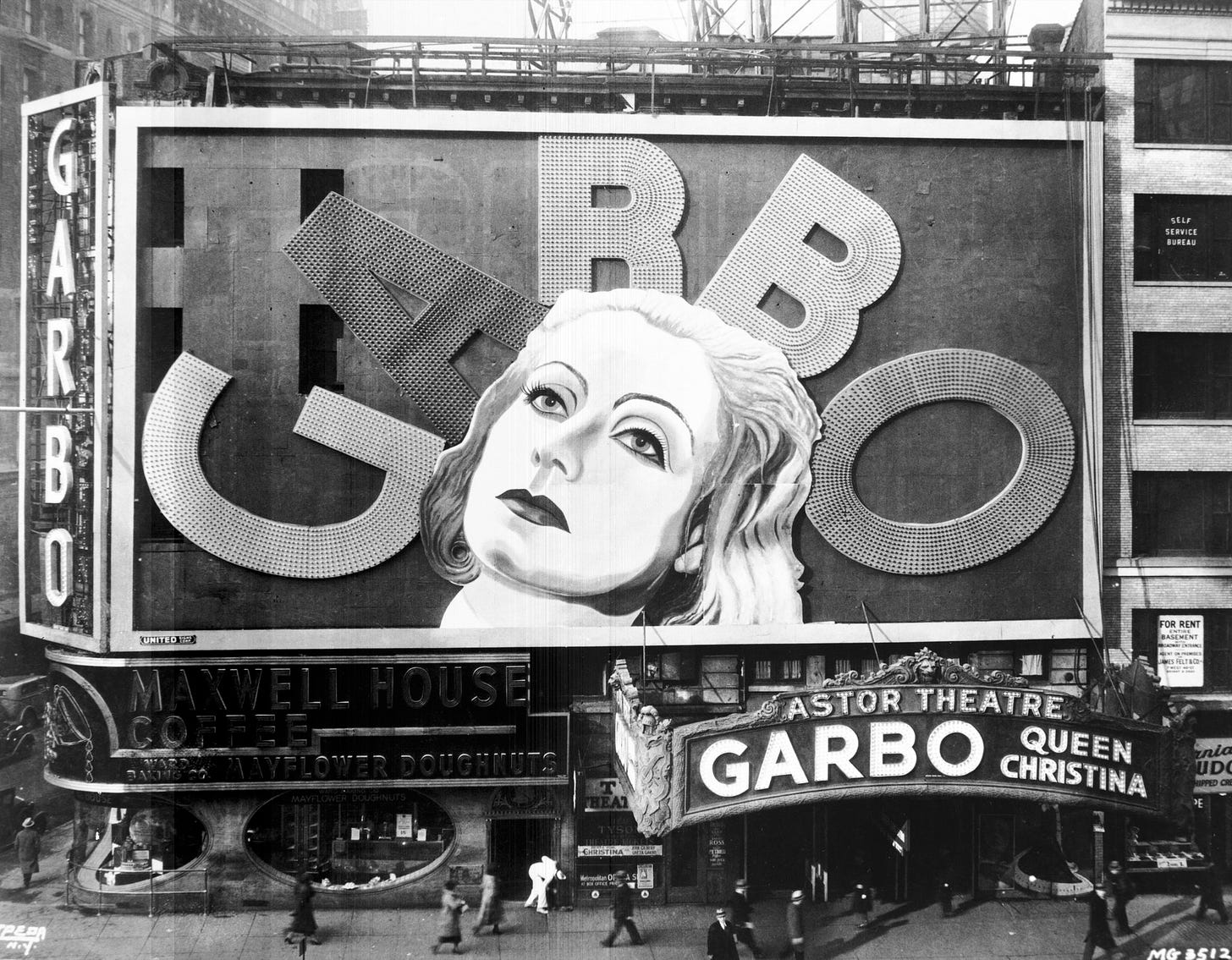
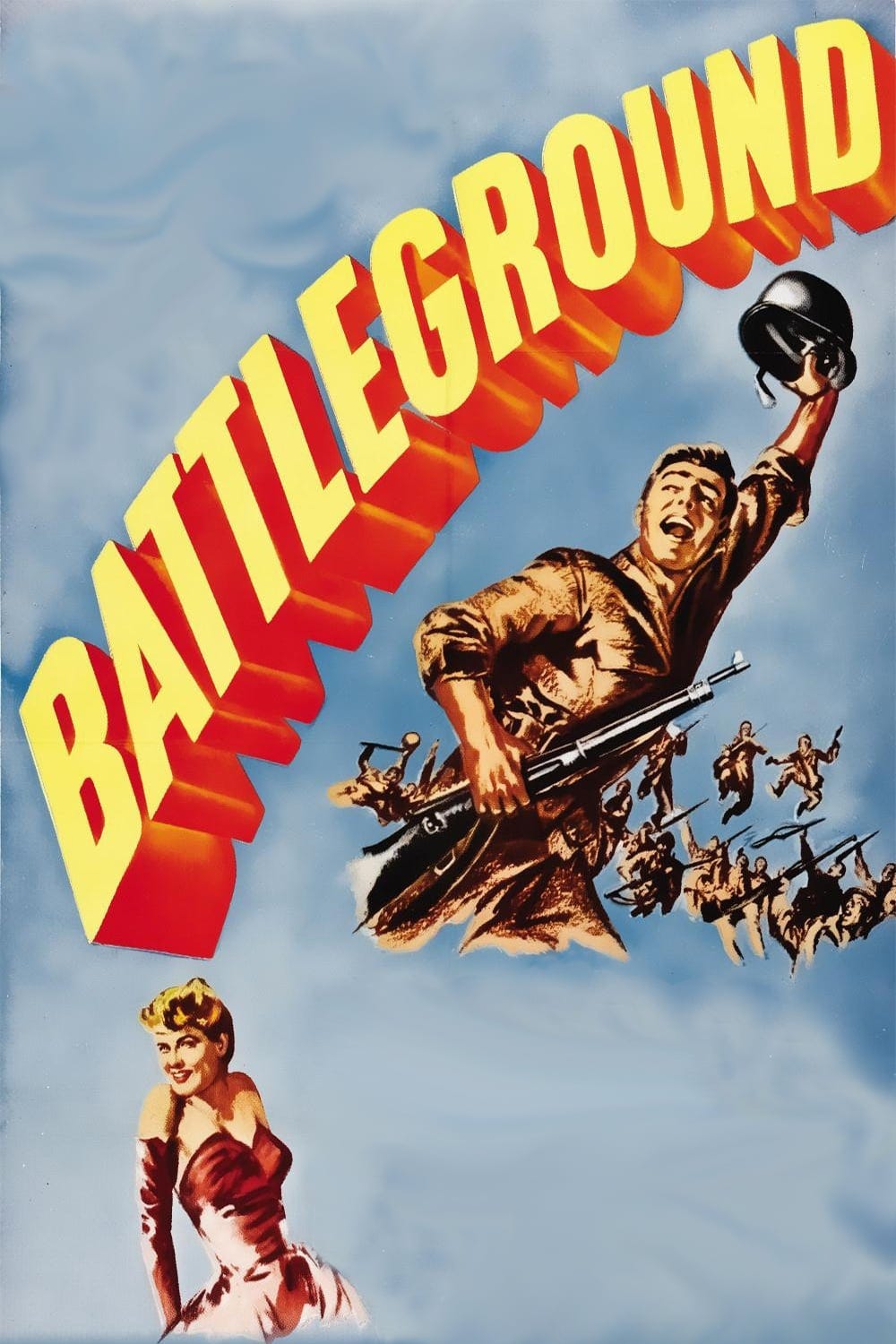
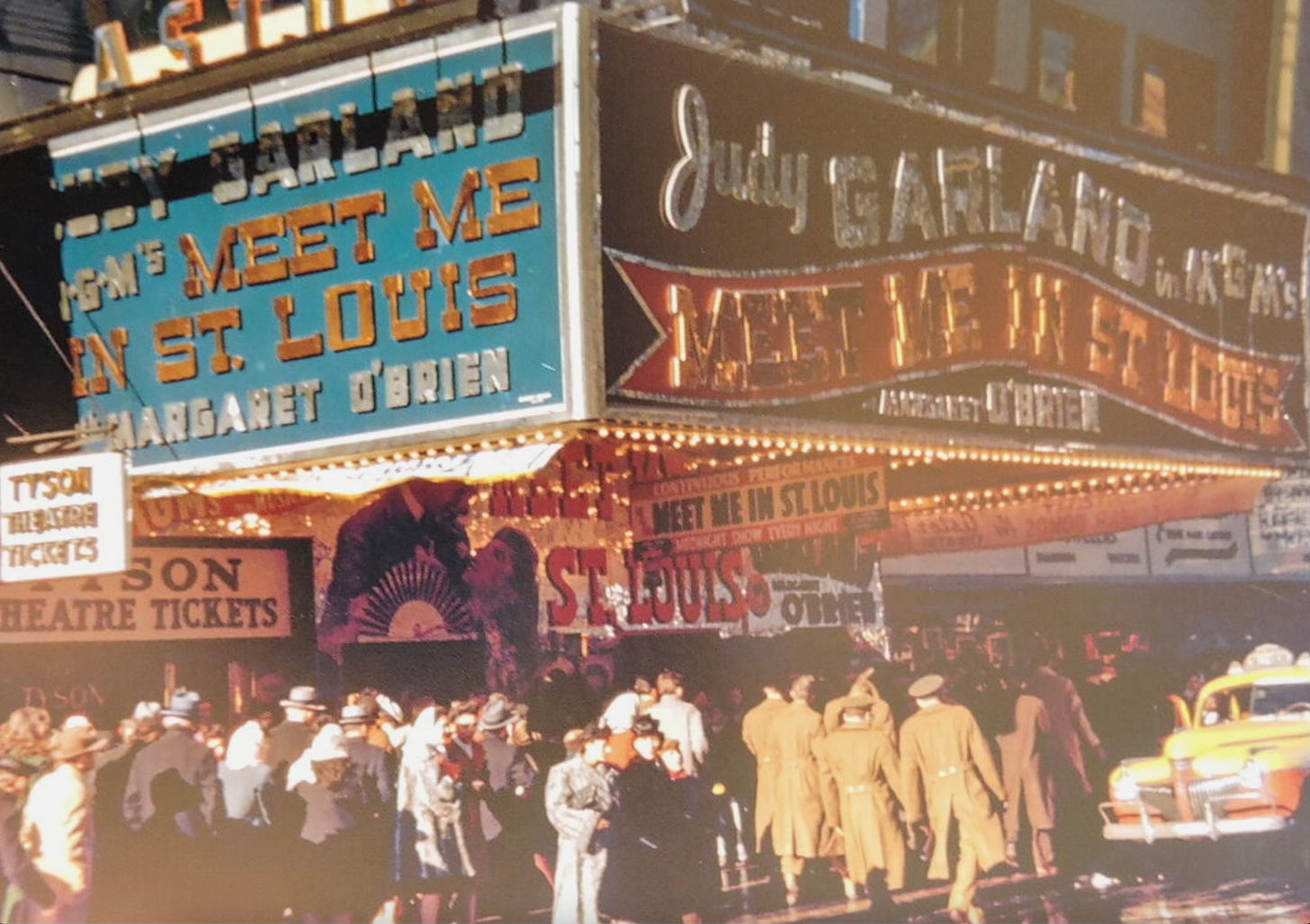
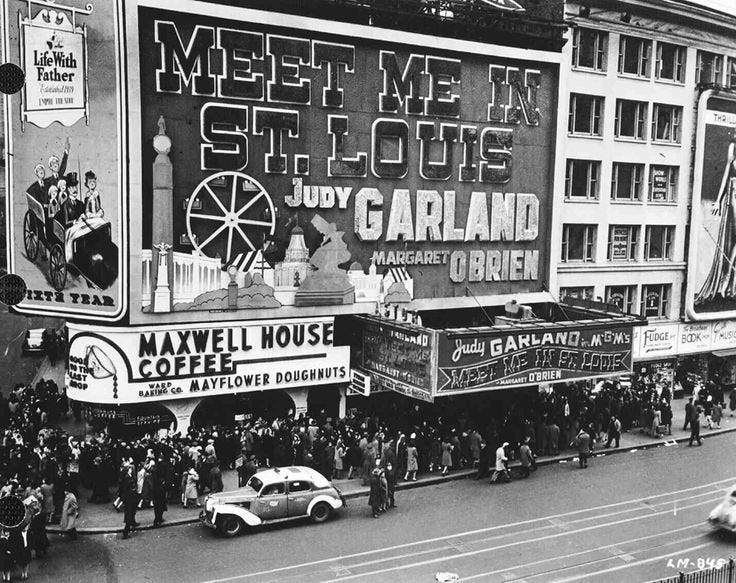
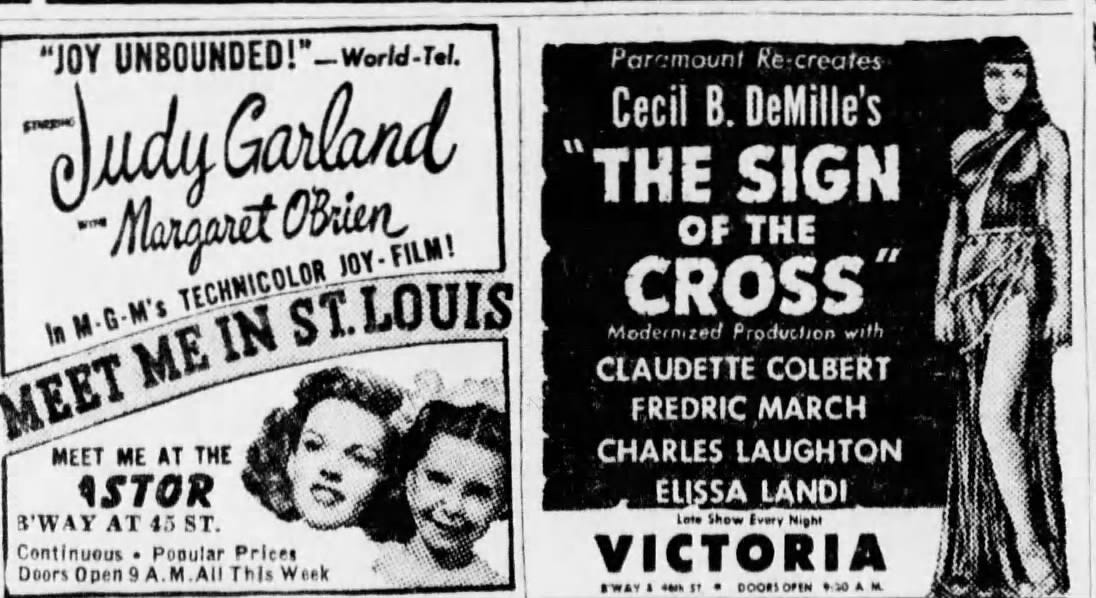
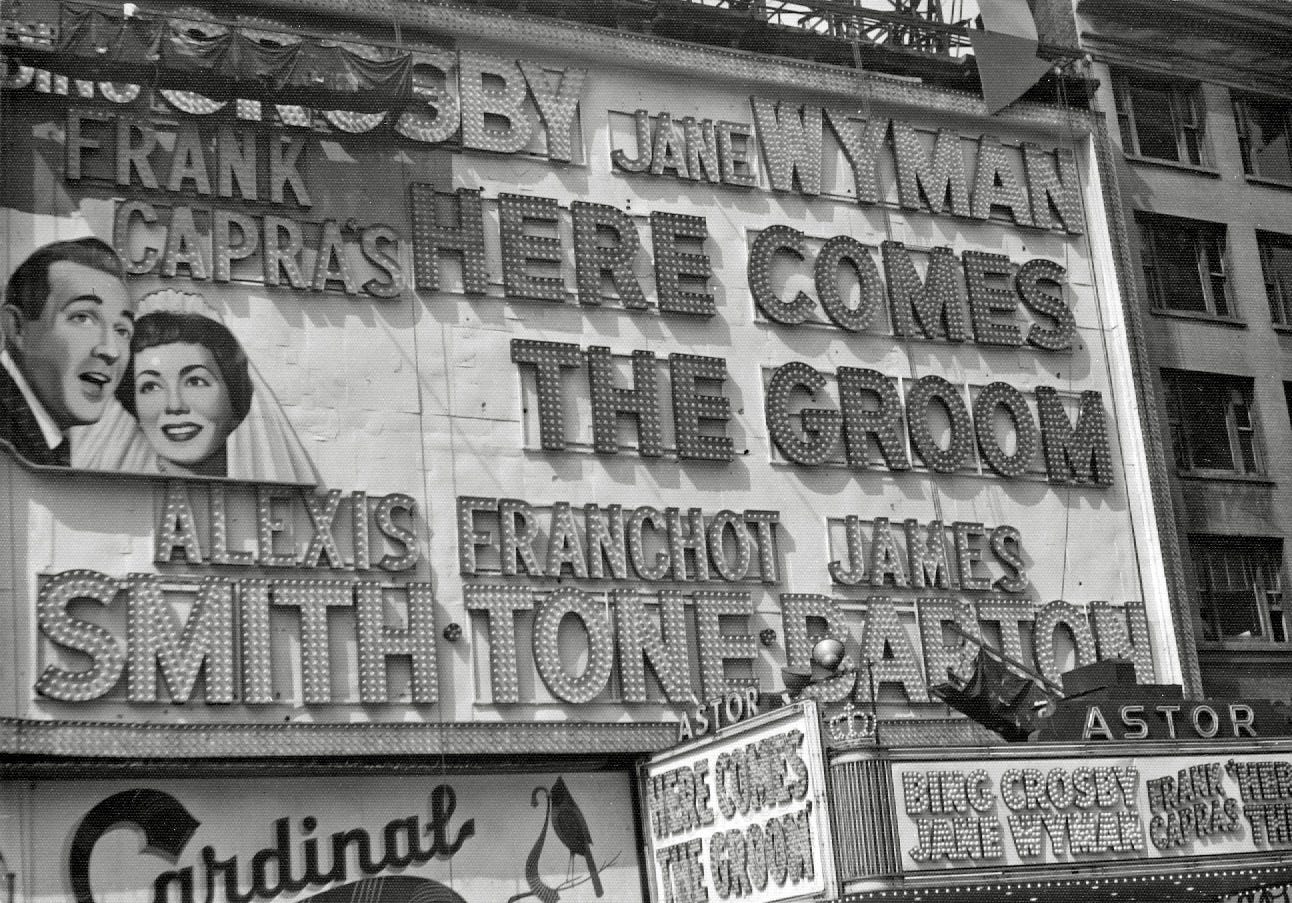
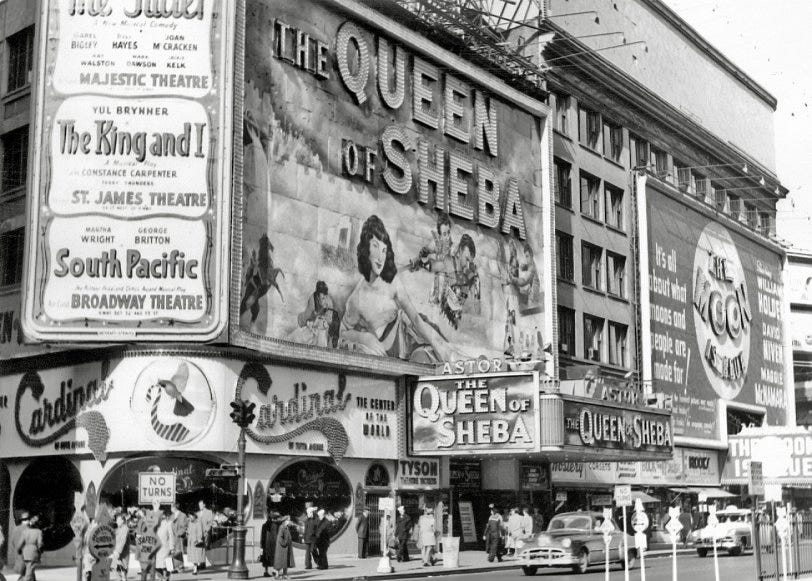

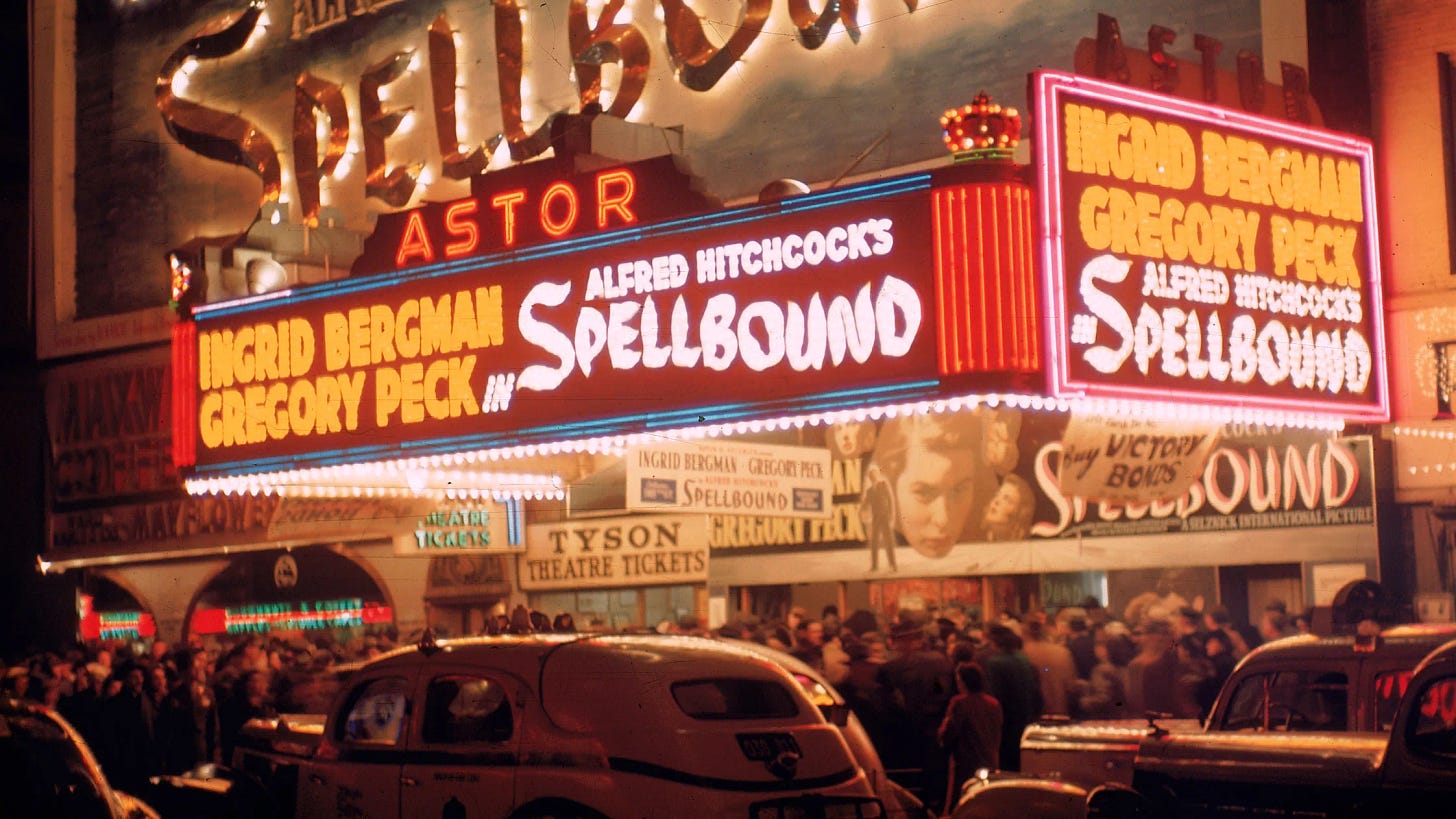
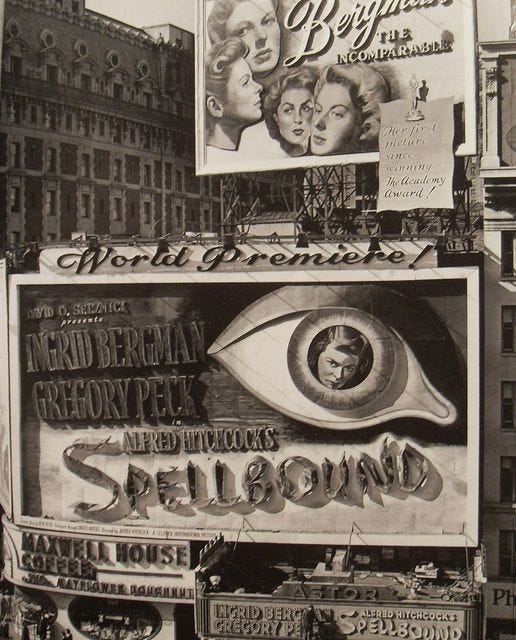
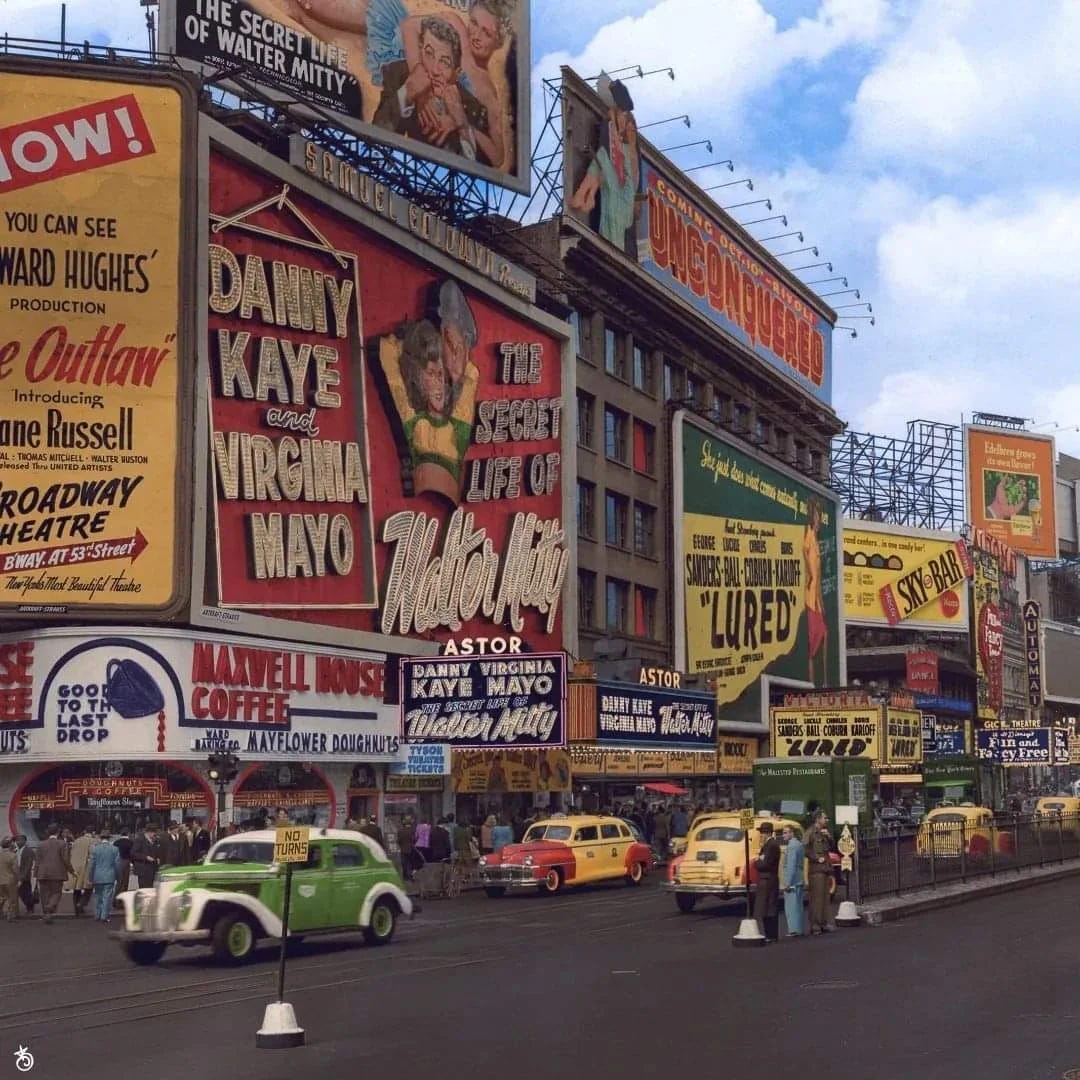
Great flash for those fronts! There was real competition for spectator's dollars and great promo for other markets to see the movie so glamourously featured.
Architect S. Charles Lee, who designed many grand theaters across the U.S. later said, "I wanted to build a place, where for .50 cents, a working man could be in a Palace."
Another factor was the ONLY source of revenue for movies were ticket sales into the theaters, so they beat the drums loudly to get every dollar they could via ticket sales....NO TV, cable, satelite, streamng, home video revenue sources then, had get it all at the box office.
This was an excellent read! The pictures are wonderful. Thank you for your hard work.